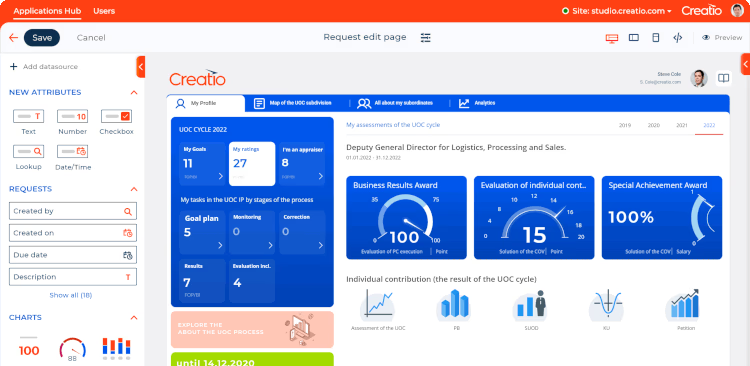A Comprehensive Overview to Applying Scalable Data Sources Without the Need for Coding Expertise
In the modern landscape of data monitoring, the capability to carry out scalable databases without coding experience is coming to be progressively important for organizations of all dimensions. What are the vital components that can really equip these users to utilize scalable databases effectively?
Recognizing Scalable Data Sources
In the realm of modern-day data monitoring, scalable databases have actually emerged as an essential service for companies seeking to take care of enhancing quantities of information successfully. These databases are created to fit development by enabling the smooth addition of resources, whether via horizontal scaling (including much more equipments) or vertical scaling (updating existing equipments) This versatility is crucial in today's fast-paced electronic landscape, where data is produced at an unprecedented rate.
Scalable data sources typically use dispersed designs, which make it possible for data to be spread throughout numerous nodes. This circulation not only boosts performance but likewise gives redundancy, guaranteeing data schedule even in case of hardware failures. Scalability can be a critical element for different applications, consisting of shopping systems, social media networks, and huge data analytics, where individual need can rise and fall significantly.
Additionally, scalable databases typically feature durable data consistency designs that balance performance and integrity. Organizations must consider their particular requirements, such as read and compose speeds, data integrity, and fault tolerance when choosing a scalable database service. Eventually, comprehending the underlying principles of scalable databases is vital for companies aiming to flourish in an increasingly data-driven world.
Key Attributes to Seek
When reviewing scalable databases, a number of crucial functions are critical to guaranteeing optimal performance and integrity. Take into consideration the architecture of the database. A distributed design can improve scalability by permitting information to be kept across numerous nodes, promoting smooth information accessibility and processing as demand rises.
One more vital feature is information partitioning, which enables reliable administration of large datasets by splitting them into smaller sized, much more workable pieces (no-code). This strategy not just improves efficiency but additionally simplifies resource allotment
In addition, try to find robust replication capacities. This feature ensures information redundancy and high availability, decreasing downtime during upkeep or unexpected failings.
Performance tracking devices are likewise essential, as they give real-time insights into system wellness and operational performance, enabling prompt adjustments to preserve optimum performance.

User-Friendly Database Devices
Simplicity is an essential element in the layout of easy to use database devices, as it boosts availability for users with differing levels of technological knowledge. no-code. These tools focus on intuitive user interfaces, allowing users to develop, manage, and question databases without calling for comprehensive programming expertise
Secret attributes normally include drag-and-drop performance, visual information modeling, and pre-built templates that improve the setup process. Such tools often use guided tutorials or onboarding procedures that facilitate individual engagement and minimize the learning curve. In addition, seamless combination with preferred data sources and solutions guarantees that individuals can conveniently import and export data, additionally streamlining operations.

Moreover, durable support and community sources, such as online forums and documentation, boost the individual experience by offering assistance when required. In general, user-friendly data source tools encourage organizations to harness the power of scalable data sources, making data management obtainable to everybody involved.
Step-by-Step Application Overview
Exactly how can organizations successfully execute scalable databases to satisfy their expanding data demands? The process starts with identifying details data needs, including the quantity, selection, and speed of information that will be processed. Next off, organizations must assess user-friendly database devices that offer scalability functions, such as cloud-based remedies or managed data source solutions.
Once the ideal device is selected, the following action involves configuring the data source setting. This includes establishing up instances, defining customer consents, and developing information frameworks that align with company purposes. Organizations needs to then migrate existing information right into the brand-new system, ensuring data stability and marginal disturbance to procedures.
Post-migration, performing comprehensive screening is crucial; this includes performance testing under different load problems to make sure the system can take care of future development - no-code. In addition, it is essential to train staff on the database management interface to assist in smooth use
Ideal Practices for Monitoring
Reliable monitoring of scalable data sources needs a calculated technique that focuses on recurring surveillance and optimization. To accomplish this, companies must carry out robust tracking tools that supply real-time understandings into data source performance metrics, such as query feedback times, source utilization, and transaction throughput. Consistently assessing these metrics can aid determine traffic jams and locations for improvement.

Routine back-ups and calamity recovery plans are vital to guard data integrity and accessibility. Developing a routine for evaluating these backups will make sure a reliable recovery process in case of an unforeseen failure.
Additionally, efficiency tuning need to be a constant procedure. Changing indexing approaches, enhancing queries, and scaling resourcesâEUR" whether up and down or horizontallyâEUR" will assist maintain optimum performance as usage needs develop.
Last but not least, cultivating a culture of expertise sharing among team participants will allow continual learning and adjustment, ensuring that the administration of scalable databases stays reliable and efficient gradually.
Verdict
Finally, the application of scalable databases can be effectively accomplished without coding knowledge via the utilization of intuitive user interfaces and straightforward tools. By adhering to the described methods for arrangement, information movement, and efficiency screening, Visit Your URL individuals can browse the intricacies of data source management easily. Emphasizing best practices for ongoing discover this info here maintenance and partnership additional boosts the capacity to manage scalable data sources successfully in a swiftly evolving data-driven environment.
In the modern landscape of information monitoring, the capacity to implement scalable databases without coding knowledge is ending up being progressively vital for organizations of all sizes.In the realm of modern information monitoring, scalable databases have emerged as an essential solution for companies looking for to manage boosting volumes of information successfully.In addition, scalable databases typically include durable information consistency models that stabilize performance and integrity.Exactly how can organizations properly apply scalable data sources to meet their growing data requirements? Next, companies need to review easy to use database visit homepage tools that supply scalability functions, such as cloud-based remedies or handled database solutions.
Comments on “Streamline Open Platform Database Creation with No-Code Advancement Platforms”